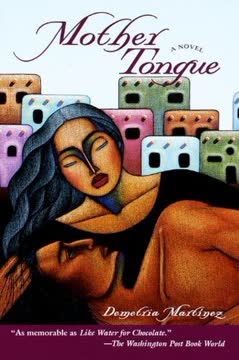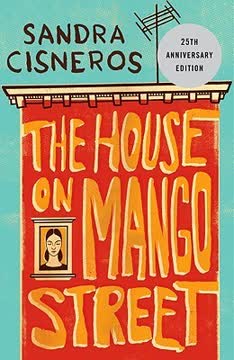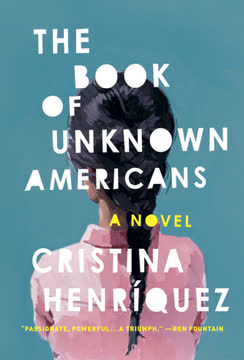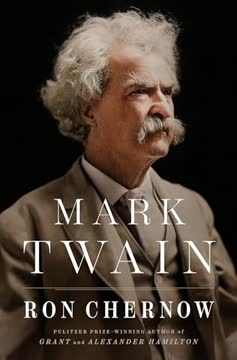Plot Summary
Arrival on Red Earth
On Independence Day, 1982, a Salvadoran man fleeing civil war steps off a plane in Albuquerque, New Mexico, and meets Mary, a young Chicana woman. Their encounter is charged with destiny and longing, as Mary is drawn to him instantly, sensing both the trauma he carries and the possibility of transformation for herself. The man, later called José Luis, is disguised to avoid detection by immigration authorities, and Mary is tasked with helping him blend in. The city's red earth and the mingling of cultures set the stage for a story where love, war, and exile intertwine. Mary's life, previously unmoored, finds a new axis in this stranger, and she is both excited and apprehensive about the risks and responsibilities that come with sheltering him.
Names and New Identities
In Soledad's kitchen, Mary and the refugee discuss the importance of names. For the man, names are dangerous—tools of both erasure and survival. He chooses the ordinary name "José Luis" to avoid standing out, a necessity for those hunted by death squads. Mary reflects on the power of naming, the imposition of identity, and the way language can both protect and obscure. Their relationship is built on layers of fiction and truth, as they conspire to create a new self for José Luis, one that can pass unnoticed in America. The act of naming becomes an act of resistance, a fragile shield against the violence of history and the scrutiny of authorities.
Love in a Time of War
Mary's attraction to José Luis deepens as they navigate the routines of daily life—sharing meals, running errands, and learning each other's languages. Their intimacy is charged with urgency, shaped by the knowledge that their time together is precarious. Mary is captivated by the mystery of José Luis, loving him before she truly knows him, and seeking in him an escape from her own ordinariness. For José Luis, love is complicated by trauma and the ever-present threat of discovery. Their relationship is both a refuge and a battleground, where longing, fear, and hope collide in the shadow of war.
Sanctuary and Secrets
Soledad's home becomes a sanctuary for José Luis and others fleeing violence. The house is filled with the smells of coffee and spices, the sounds of whispered Spanish, and the constant vigilance required to avoid detection. Volunteers come and go, offering legal aid and support, while Mary and José Luis grow closer. The threat of deportation looms, and the need for secrecy shapes every interaction. The underground network that shelters refugees is both a lifeline and a source of anxiety, as everyone involved must balance compassion with caution. The intimacy of shared danger forges bonds, but also heightens the sense of impermanence.
Testimonies and Truths
José Luis begins to speak publicly about his experiences in El Salvador, giving testimony at church gatherings and activist meetings. His story is one of faith, resistance, and loss—priests murdered, friends disappeared, and the constant fear of death. Mary listens, translating and supporting him, but also struggling with the limits of her understanding. The act of telling and retelling trauma is both healing and wounding, as José Luis's words are filtered through the skepticism of the media and the indifference of distant authorities. Testimony becomes a form of prophecy, a way to demand change, but it also exposes the deep wounds that cannot be easily healed.
Language as Bridge
Language is both a barrier and a bridge between Mary and José Luis. They teach each other—Spanish verbs, English idioms, the poetry of Neruda and Dalton. Their love is expressed in translation, in the struggle to find words for feelings that transcend language. Mary's Spanish is halting, but her desire to connect is fierce. José Luis's poetry and stories become a way to share his inner world, while Mary's journal entries reveal her longing and confusion. The process of learning each other's languages mirrors their efforts to understand and heal one another, even as misunderstandings and silences persist.
The Weight of Memory
Both Mary and José Luis are shaped by memories—of family, of war, of abandonment. Mary's mother's death and her father's betrayal have left her with a sense of emptiness and a hunger for meaning. José Luis is haunted by the violence he witnessed and endured, the friends and loved ones lost to the war. Their relationship becomes a site where these memories collide, sometimes offering solace, sometimes reopening wounds. The past is never far away, and the effort to build a future together is constantly threatened by the weight of what cannot be forgotten.
Desire and Disappearance
As their relationship deepens, Mary becomes increasingly anxious about losing José Luis. The intensity of their desire is matched by the fear that it will be torn apart by forces beyond their control—immigration, war, or the simple fact of impermanence. Mary's longing is tinged with desperation, and she struggles to hold on to José Luis even as she senses him slipping away. For José Luis, love is both a comfort and a reminder of all he has lost. The specter of disappearance—of becoming one of the "desaparecidos"—haunts them both, shaping their actions and their dreams.
Scars Beneath the Skin
José Luis eventually reveals the physical and emotional scars left by torture and loss. The marks on his body are a map of suffering, evidence of the brutality he survived. Mary tries to offer comfort, massaging his wounds and listening to his stories, but she is forced to confront the limits of her ability to heal him. Their intimacy becomes a space where pain is both shared and incommunicable. The revelation of trauma is an act of trust, but it also exposes the deep chasm between their experiences. Healing is slow, partial, and always shadowed by the possibility of re-injury.
The Limits of Healing
Mary and José Luis both seek healing—through love, through activism, through spiritual practices and traditional remedies. Soledad, the wise and wounded godmother, offers advice and support, drawing on her own experiences of loss and resilience. Yet the wounds of war and abuse are not easily mended. Mary's own buried trauma surfaces, triggered by violence and the fear of abandonment. The realization that some pain cannot be erased, only carried, becomes a turning point. Healing is redefined as the ability to endure, to find meaning, and to continue loving in the face of brokenness.
Breaking and Becoming
A night of joy and intimacy between Mary and José Luis is shattered when he, triggered by memories of past violence and loss, lashes out physically. The incident forces both to confront the depths of their pain—Mary's childhood abuse, José Luis's war trauma—and the ways in which violence begets violence. In the aftermath, they seek help, turning to counselors and traditional healers. The process of breaking becomes a catalyst for transformation, as both begin to reclaim their voices and their agency. The story acknowledges the reality of harm, but also the possibility of forgiveness and renewal.
The Mother of the Disappeared
The narrative widens to include the broader community of those affected by the Salvadoran war—mothers searching for disappeared children, activists demanding justice, and survivors building new lives. Mary becomes involved in organizing and advocacy, inspired by the example of the "Mother of the Disappeared". The struggle for truth and remembrance becomes a form of healing, as personal grief is transformed into collective action. The act of naming the dead, of refusing to forget, is both a political and a spiritual imperative. The story honors the resilience of those who persist in the face of overwhelming loss.
Return to El Salvador
Years later, Mary and her son José Luis travel to El Salvador to search for the boy's father and to confront the legacy of the war. The journey is fraught with anxiety and hope, as they navigate the bureaucracies of the archdiocese and the emotional terrain of memory. They encounter other families searching for loved ones, and the experience of sifting through photographs of the dead and disappeared is both numbing and transformative. The trip becomes a rite of passage for both mother and son, a way to reclaim history and identity.
The Search for the Father
In the archives of the church, Mary and her son find a photograph of José Luis's father, listed among the disappeared but without a date of death. The discovery brings both relief and sorrow—a confirmation that he was real, that he loved them, but also that his fate remains unknown. The act of searching, of refusing to accept erasure, becomes an act of love and resistance. The son, bearing his father's name, claims a new sense of identity and belonging. The journey does not bring closure, but it opens the possibility of reconciliation with the past.
Inheritance of Sorrow and Hope
Mary reflects on the ways in which trauma and hope are inherited across generations. Her son, born of love and war, carries both the wounds and the strengths of his parents. The process of telling and retelling the family's story becomes a way to break cycles of silence and shame. The younger José Luis finds his own path, engaging in environmental activism and building connections with his Salvadoran heritage. The legacy of suffering is not denied, but it is transformed into a source of empathy and purpose.
The Power of Story
Throughout the narrative, storytelling is presented as both a survival strategy and a form of resistance. Mary's journals, José Luis's poetry, and Soledad's letters all serve to preserve memory, make sense of chaos, and assert the dignity of those who have been silenced. The act of writing becomes a way to reclaim agency, to bear witness, and to offer healing to oneself and others. The story acknowledges the limitations of language, but insists on its necessity. In the end, the power to name, to remember, and to imagine new futures is the greatest inheritance.
Letting Go, Holding On
As Mary and her son return from El Salvador, they find a measure of peace. The search for the father remains unresolved, but the act of seeking has brought them closer to themselves and to each other. Mary learns to let go of the need for certainty, embracing the ambiguity of love and loss. The poster of the Mother of the Disappeared becomes an icon of remembrance and hope, a reminder that healing is an ongoing process. The story ends with a sense of acceptance, gratitude, and the quiet courage to continue living and loving.
Epilogue: Letters Across Borders
In a final letter, José Luis writes to Mary from Canada, where he is working with other survivors to help refugees return home. He acknowledges the pain of their separation, but also the enduring bond between them. The letter is both a farewell and a promise—a testament to the ways in which love, memory, and solidarity transcend borders. The story closes with an invocation to remember the disappeared, to honor the living, and to continue the work of healing and justice.
Characters
Mary (María)
Mary is a young Chicana woman whose life is marked by loss, longing, and a restless search for purpose. Orphaned by her mother's death and her father's abandonment, she is drawn to the mystery and intensity of José Luis, seeing in him both a lover and a path to self-discovery. Mary's journey is one of awakening—through love, through pain, and through the act of storytelling. She is introspective, passionate, and at times naive, believing she can heal the wounds of others even as she struggles with her own. Her relationship with José Luis forces her to confront the limits of love, the reality of trauma, and the necessity of forging her own identity. Over time, she transforms from a passive dreamer into an active participant in her own life and in the broader struggles for justice and remembrance.
José Luis
José Luis is a Salvadoran refugee whose life has been shaped by violence, faith, and resistance. Scarred by torture and loss, he carries the weight of his country's suffering and the burden of survival. He is introspective, principled, and deeply wounded, seeking solace in poetry, activism, and fleeting moments of intimacy. His relationship with Mary is both a refuge and a source of conflict, as he grapples with the impossibility of leaving the past behind. José Luis is haunted by memories of loved ones lost, and his sense of duty to his homeland often conflicts with his desire for personal happiness. His journey is one of endurance, self-examination, and the search for meaning in the aftermath of atrocity.
Soledad
Soledad is Mary's godmother and mentor, a wise and resilient woman who has dedicated her life to helping refugees and fighting for justice. She is practical, compassionate, and deeply spiritual, drawing on both traditional remedies and political activism to support those in need. Soledad's own experiences of love, loss, and survival inform her guidance to Mary, and she serves as a bridge between generations and cultures. Her home is a sanctuary, and her letters are a source of wisdom and comfort. Soledad's death marks a turning point in the narrative, but her legacy endures in the lives she touched and the lessons she imparted.
Young José Luis (the son)
The son of Mary and José Luis, he grows up in the shadow of his parents' love and the legacy of war. Sensitive, intelligent, and searching, he struggles with questions of identity, belonging, and purpose. His journey to El Salvador with his mother becomes a rite of passage, allowing him to claim his heritage and forge his own path. He is both a symbol of continuity and a unique individual, determined to make a difference in the world while coming to terms with the complexities of his origins.
Ana
Ana is the woman José Luis was to marry in El Salvador, whose death at the hands of the death squads haunts him throughout the narrative. She represents both personal loss and the collective suffering of the disappeared. Her memory is a source of pain, guilt, and longing for José Luis, and her presence lingers in his poetry and dreams. Ana's fate underscores the brutality of the war and the impossibility of closure for those left behind.
Soledad's Network (Volunteers, Activists)
A constellation of church workers, lawyers, and activists who form the underground railroad for Central American refugees. They provide practical support, legal aid, and emotional sustenance, embodying the values of solidarity and compassion. Their efforts are often fraught with risk, but they persist in the face of indifference and hostility. This network is both a lifeline for the refugees and a testament to the power of collective action.
The Mothers of the Disappeared
A collective presence in the narrative, these women search tirelessly for their missing children, refusing to let their loved ones be forgotten. They are symbols of endurance, courage, and the refusal to accept erasure. Their activism inspires Mary and others to continue the work of remembrance and justice, transforming personal grief into a force for change.
The Archbishops (Oscar Romero, José Grande)
Figures who loom large in the background, representing the moral conscience of El Salvador. Their assassinations and advocacy for the poor are touchstones for the characters, reminders of the stakes of the struggle and the costs of speaking truth to power. Their legacy is one of faith, sacrifice, and the ongoing demand for justice.
Mary's Parents
Mary's mother and father, though largely absent, shape her psyche and her quest for meaning. Her mother's death leaves her with unresolved grief, while her father's abandonment instills a fear of loss and a hunger for connection. Their influence is felt in Mary's relationships and her evolving sense of self.
The Disappeared
The countless men, women, and children lost to the violence of the Salvadoran war. Their absence is a constant presence in the narrative, shaping the actions and emotions of those left behind. They are both individuals and symbols, reminders of the costs of injustice and the necessity of remembrance.
Plot Devices
Dual Narratives and Shifting Perspectives
The novel employs a structure that alternates between Mary's first-person reflections, José Luis's journal entries, letters from Soledad, and the son's perspective. This multiplicity of voices allows for a nuanced exploration of memory, trauma, and identity. The shifting perspectives highlight the gaps and overlaps in understanding, the ways in which stories are constructed, and the impossibility of a single, authoritative truth. The use of letters, poems, and testimonies blurs the boundaries between fiction and documentary, personal and political.
Testimony and Testimonio
Central to the narrative is the act of bearing witness—telling stories of suffering, survival, and hope. Testimony is both a personal catharsis and a political act, intended to change hearts and minds. The novel draws on the Latin American tradition of testimonio, where individual stories are offered as prophecy and collective memory. The process of telling and retelling trauma is fraught with difficulty, but it is also a means of reclaiming agency and demanding justice.
Language and Translation
Language is both a barrier and a tool for connection. The characters' efforts to learn each other's languages, to translate poetry and testimony, mirror their attempts to bridge cultural and emotional divides. Misunderstandings and silences are as important as words spoken, and the act of translation becomes a metaphor for the work of empathy and solidarity.
Symbolism of Names and Naming
The act of choosing and bestowing names is a recurring motif, symbolizing the struggle for identity and the power of language to both protect and erase. Names are shields, burdens, and gifts, and the process of naming is fraught with danger and possibility. The revelation of true names becomes a moment of intimacy and trust, while the refusal to name is an act of resistance against violence and erasure.
Intergenerational Trauma and Healing
The novel explores the ways in which trauma is passed down across generations, shaping the lives of children and parents alike. Healing is depicted as a collective, ongoing process, requiring both remembrance and the willingness to let go. The interplay between personal and collective memory is central, as is the role of storytelling in breaking cycles of silence and shame.
Foreshadowing and Circular Structure
The narrative is rich with foreshadowing—dreams, omens, and repeated motifs that hint at future events and the cyclical nature of trauma and healing. The story's structure is circular, returning to key moments and images, and emphasizing the persistence of memory and the possibility of renewal.
Analysis
Mother Tongue is a profound meditation on love, trauma, and the power of language to both wound and heal. Set against the backdrop of the Salvadoran civil war and the sanctuary movement in the United States, the novel weaves together personal and political histories, exploring the ways in which individual lives are shaped by collective violence. Martínez's narrative insists on the necessity of bearing witness—to one's own pain, to the suffering of others, and to the truths that official histories seek to erase. The novel challenges the myth of the American melting pot, exposing the limits of assimilation and the persistence of cultural and historical wounds. At its heart, Mother Tongue is a story about the search for belonging—in language, in love, and in community—and the courage required to face the past without being destroyed by it. Through its layered voices and poetic imagery, the novel offers a vision of healing that is honest, hard-won, and rooted in solidarity. It reminds us that to remember is an act of resistance, and that the stories we tell—however fragmented—are the foundation of both personal and collective redemption.
Last updated:
Review Summary
Mother Tongue receives mixed reviews, with an average rating of 3.82 out of 5. Many readers praise the lyrical prose and poetic style, finding it emotionally resonant and insightful about the Salvadoran civil war and refugee experiences. The book is commended for its exploration of love, trauma, and cultural identity. Some critics find the narrative structure disjointed and the main character unlikable. Several reviewers appreciate the book's portrayal of the Sanctuary movement and its ability to humanize the impacts of war and displacement. Overall, it's considered a powerful, albeit sometimes challenging, read.









